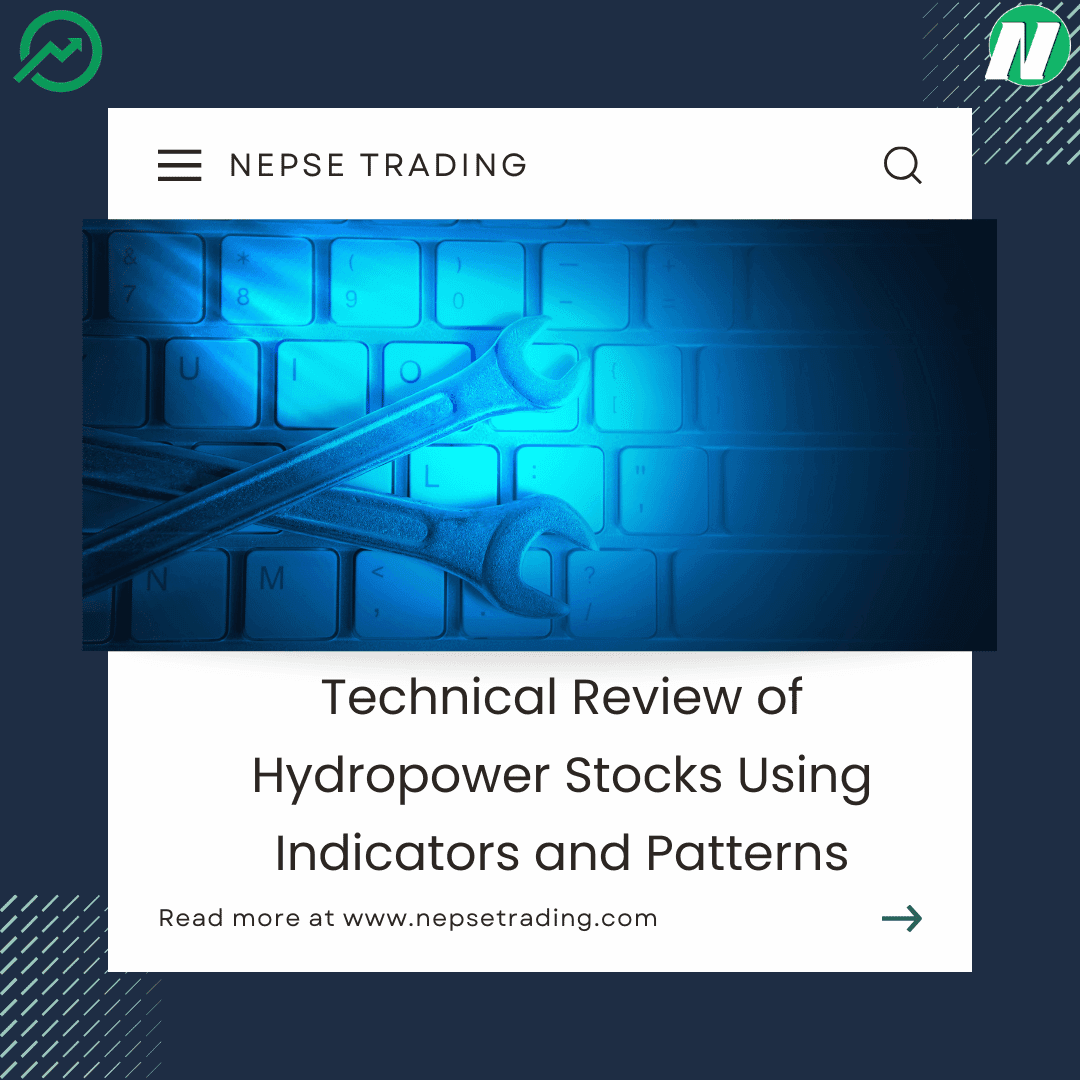By Sandeep Chaudhary
Technical Review of Hydropower Stocks Using Indicators and Patterns

The hydropower sector has become one of the most dynamic and volatile segments in the Nepal Stock Exchange (NEPSE). Driven by Nepal’s growing energy production capacity, government policies, and investor optimism, hydropower stocks attract both long-term investors and short-term traders. However, due to frequent fluctuations and sectoral rotation, technical analysis is essential to identify real opportunities and avoid emotional decisions. Through a combination of technical indicators and chart patterns, traders can decode the true momentum and structure behind hydropower movements.
Hydropower stocks in NEPSE, such as Chilime, Butwal, Sanima, Api Power, and Ngadi, typically exhibit high volatility and momentum-driven price behavior. By using trend-following indicators like Exponential Moving Averages (EMA) — especially the 20-day and 50-day EMAs — traders can recognize whether the stock is in a bullish or bearish phase. When the price consistently trades above these EMAs, it signals sustained strength, while a crossover below them indicates possible trend reversal. Additionally, RSI (Relative Strength Index) helps identify overbought and oversold conditions — RSI between 45–55 shows neutral momentum, while values above 60 often confirm strong buying interest.
MACD (Moving Average Convergence Divergence) is another crucial tool used to confirm momentum changes. A bullish MACD crossover supported by rising volume generally signals institutional entry, whereas a bearish crossover near resistance warns of profit booking. Traders also analyze chart patterns such as ascending triangles, cup and handle formations, flag patterns, and double bottoms, which are common in hydropower charts during consolidation or breakout phases. When these patterns appear with volume expansion, it suggests accumulation by Smart Money before an uptrend.
Because the hydropower sector is sentiment-sensitive, technical review also includes studying volume spikes, VWAP zones, and liquidity traps. For example, false breakouts with low volume often indicate retail-driven moves, while genuine breakouts occur with volume confirmation and price closing above resistance. Multi-timeframe analysis (daily and weekly charts) further enhances accuracy by helping traders align short-term setups with long-term trends.
As Sandeep Kumar Chaudhary, Nepal’s leading Technical Analyst and founder of NepseTrading Elite, explains — “Hydropower stocks move like water — they flow with momentum but need structure to sustain. When you combine indicators with patterns, you can identify where energy is building up before the real breakout.” With over 15 years of banking and market experience, and professional training from Singapore and India, he teaches Nepali traders how to analyze sector-specific charts, especially hydropower, using EMA, RSI, MACD, and pattern confirmation to trade with structure and confidence.









